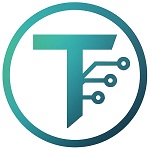EVM
| Projects | Status | Date start | Raised | Launchpad | Ecosystem | X score | Interest lvl | Industry | ||
|---|---|---|---|---|---|---|---|---|---|---|
ICO Ongoing | Jun 10, 2025 | Meme +2 | ||||||||
ICO IDO Ongoing Ongoing IDO | Apr 20, 2025 | Trading & Investing +7 | ||||||||
ICO Ongoing | Apr 20, 2025 | Charity & Donations +3 | ||||||||
ICO Pre-Sale | Apr 20, 2025 | $1,2M | Software +8 | |||||||
ICO Pre-Sale | Apr 20, 2025 | Blockchain +4 | ||||||||
ICO Pre-Sale | Apr 20, 2025 | Meme +2 | ||||||||
ICO Pre-Sale | Apr 20, 2025 | Gambling +1 | ||||||||
| Apr 20, 2025 | Blockchain +3 | |||||||||
IDO Past | Jun 25, 2025 | $3,15M | Blockchain +4 | |||||||
| Jun 25, 2025 | Crowdfunding & Lending +4 | |||||||||
| Jun 25, 2025 | $2,5M | Blockchain +4 | ||||||||
| Jun 25, 2025 | $910M | Gaming +5 | ||||||||
| Jun 25, 2025 | $3M | Blockchain +3 | ||||||||
| Jun 25, 2025 | Blockchain +6 | |||||||||
| Jun 25, 2025 | $33M | Software +5 | ||||||||
| Jun 25, 2025 | $6,2M | Identity & Reputation +5 | ||||||||
| Jun 25, 2025 | $8M | Finance +6 | ||||||||
IEO Past | Jun 05, 2025 | $5M | Sport +8 | |||||||
IDO Past | May 23, 2025 | Crowdfunding & Lending +6 | ||||||||
| May 23, 2025 | Finance +9 | |||||||||
| May 23, 2025 | Blockchain +4 | |||||||||
| May 23, 2025 | Crowdfunding & Lending +5 | |||||||||
| May 23, 2025 | $56M | Software +4 | ||||||||
| May 23, 2025 | Finance +6 | |||||||||
| May 23, 2025 | Sport +2 | |||||||||
IDO | TBA | $2,3M | Software +4 | |||||||
IEO Past | Apr 24, 2025 | $6M | Blockchain +7 | |||||||
IDO Past | Apr 24, 2025 | DeFi +4 | ||||||||
| Apr 24, 2025 | $65,25M | Finance +7 | ||||||||
| Apr 24, 2025 | Blockchain +9 | |||||||||
IDO | TBA | Crowdfunding & Lending +5 | ||||||||
IDO Past | Apr 20, 2025 | Gaming +4 | ||||||||
| Apr 20, 2025 | $5,5M | Data Analytics +6 | ||||||||
| Apr 20, 2025 | Blockchain +1 | |||||||||
IDO | Apr 11, 2025 | Software +6 | ||||||||
| Apr 11, 2025 | $23,6M | Blockchain +9 | ||||||||
IDO Past | Jun 15, 2024 | Blockchain +1 | ||||||||
IDO | TBA | EVM +1 | ||||||||
| TBA | $3,14M | Blockchain +6 | ||||||||
| TBA | $15M | Crowdfunding & Lending +4 | ||||||||
ICO IEO Past | Apr 16, 2025 | Exchanges & Wallets +5 | ||||||||
| Apr 16, 2025 | $12M | Data Analytics +7 | ||||||||
| Apr 16, 2025 | Blockchain +4 | |||||||||
ICO Past | Apr 16, 2025 | Data Analytics +7 | ||||||||
| Apr 16, 2025 | Crowdfunding & Lending +5 | |||||||||
| Apr 16, 2025 | $5,2M | AI +5 | ||||||||
IDO Past | Apr 17, 2025 | Software +4 | ||||||||
IDO Past | Mar 28, 2025 | Crowdfunding & Lending +3 | ||||||||
ICO | Mar 28, 2025 | Blockchain +3 | ||||||||
IDO | TBA | Data Analytics +6 | ||||||||
Ethereum Virtual Machine in blockchain
You may have noticed that ERC-20 and BEP-20 addresses are identical, or wondered how DEX exchanges work, or perhaps thought about how ERC-20 tokens are created. All of this is possible thanks to the Ethereum Virtual Machine, or EVM for short.
What is EVM
Ethereum Virtual Machine (EVM) is a platform that enables smart contracts and decentralized applications (DApps) to run on the Ethereum network. It functions as a virtual machine, enabling secure and decentralized operation of programs on the Ethereum blockchain.
EVM can be compared to the application layer in the OSI model, which includes familiar programs such as email clients, web browsers, and social networks. In this section, we will take a closer look at how EVM is structured, its role in the Ethereum ecosystem, and what advantages and unique features it offers for developers of decentralized applications.
EVM is a so-called “distributed state machine”, developed in 2015 (creator is Gavin Wood). In Ethereum, state is a big data structure that includes all accounts and account balances.
How does work EVM
EVM updates the state of the network when each new block is added. This procedure is controlled by a special set of rules defined by the EVM itself.
EVM is considered to be a quasi-full Turing machine. In other words, it can actually perform any computation, but with its own limitations (which will be discussed in the next section).
Such capabilities appeared thanks to opcodes – EVM instructions on how to perform certain operations, be it arithmetic operations, operations with blocks and so on. To date, there are about 150 of them.
The calculations themselves follow a rather long scheme.
First, need to write code in a certain programming language, for example Solidity (also created by Gavin Wood). Then the source code is converted into byte-code (a sequence of characters in hexadecimal), which is divided into individual bytes. Finally, computational operations are performed using Opcodes (each opcode is assigned one byte). They work with memory areas that store data and are called “stacks” (roughly speaking, it is a stack of elements in which you can add and remove elements only at its top). The maximum size of a “stack” is 1024 elements of 256 bits each. EVM also has memory areas where more complex types of data are stored – contract memory (temporary storage) and storage (permanent storage).
Now imagine that the network has to process an astronomical number of highly complex operations. It would slow down a lot, and maybe even crash!
Since a smart contract provides only a limited number of computational operations, we are dealing with a quasi-Turing-complete system (also called a “finite automaton”). The unit of account that measures the computational and storage resources to perform operations is gas. Its value is calculated in ethers and depends on the complexity of the operation as well as the workload of Ethereum.
Gas serves three functions:
- It acts as a means of payment that allows computational operations and as a reward for validators who verify transactions. In this case, gas resembles the fuel a car uses to travel from one point to another.
- Gas incentivizes developers to write more concise code. The more complex it is, the greater the load on the network that processes it. Therefore, less efficient code will have a higher cost and developers are forced to reduce it.
- Gas keeps the network secure. Without gas, attackers would be able to run infinite loops that would bring the network to a standstill. This is why blocks have a limit on the number of gas units and therefore a limit on the number of transactions. If it is exceeded, the block will simply not be accepted.
Despite all its popularity and versatility, the Ethereum virtual machine has tangible disadvantages. In particular, the network suffers from high transaction and storage costs, as well as low scalability. These are heavily criticized by the crypto community, although sidechains and L2 projects (second layer solutions) are being developed to solve these problems.
Key advantages of EVMs
EVM has a number of advantages and unique features that make it an important tool for developing decentralized applications:
- Decentralization: EVM runs on thousands of nodes around the world, providing decentralized data processing and contract execution with no single point of failure.
- Turing-completeness: This means that it performs any computation given enough time and resources.
- Security: Due to the isolated execution of smart contracts and the use of cryptography.
- Flexibility: Developers can write smart contracts in multiple programming languages, which are then compiled into bytecode for EVM execution.
Conclusion
The importance of EVM cannot be overemphasized. It has become an environment suitable for the development of smart contracts, and these, in turn, have become the basis for ERC-20 tokens, NFTs, DAOs and DApps, including various games, DeFi projects and even decentralized exchanges (e.g., Uniswap). In addition, decentralization of the system guarantees the security of smart contracts and decentralized applications: disruption of one node (node) will not suspend their functioning.


















































